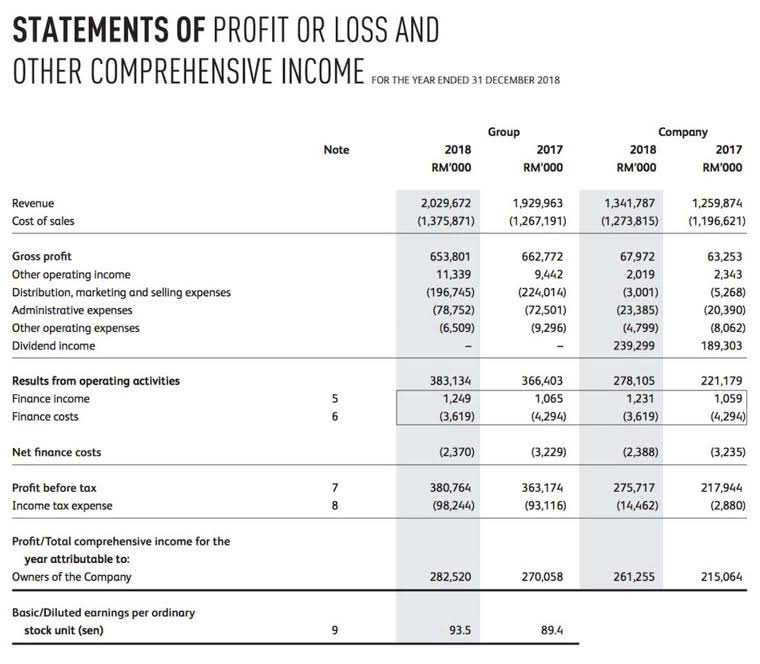
As a nonprofit CEO or Executive Director, understanding the financial health of your organization is crucial for making informed decisions and demonstrating transparency to your stakeholders. One essential financial statement that provides valuable insights into your nonprofit’s activities and resources is the Statement of Activities. In this blog post, we will delve into what a Statement of Activities entails, what should be included in it, provide a practical example, discuss how it can be utilized, and answer some frequently asked questions. By the end, you’ll have a clear understanding of this important financial statement and its significance for your nonprofit’s financial management. Because all of the information that goes into the four major nonprofit financial statements should already be stored in your accounting software, there are two main ways to compile these reports.
Operating Cash Flow (OCF): Definition, Cash Flow Statements – Investopedia
Operating Cash Flow (OCF): Definition, Cash Flow Statements.
Posted: Sat, 08 Jul 2023 07:00:00 GMT [source]
Nonprofit accounting can feel complicated for nonprofits without a solid financial background, but there are ways to make filing reports easier. A Statement of Activities is similar to a for-profit income statement and is one of the four financial reports nonprofits must file. There are some parallels between nonprofits’ financial statements and those of for-profit organizations—systematic reporting is an important part of complying with the Generally Accepted Accounting Principles (GAAP).
Illustration of the Statement of Financial Position and the Statement of Activities
To fulfill Cornell’s primary missions, operating expenses consist primarily of salary and benefits and maintenance costs for facilities and services. Contributions for capital projects, endowments, and similar funds are reported as non-operating revenues. Operating revenues include anticipated earnings related to Cornell’s mission of “learning, discovery, and engagement” along with services that support students and campus operations. The term includes the flow of cash into and out of the company, i.e., cash inflows and outflows. It is important to see the distinction between restricted and unrestricted as only unrestricted revenue can be used to pay bills.

The cash flow statement (CFS) measures how well a company generates cash to pay its debt obligations, fund its operating expenses, and fund investments. The cash flow statement complements the balance sheet and income statement. A Statement of Activities is one of the four required financial statements a nonprofit must file. The experienced team at Jitasa has compiled, distributed, and analyzed financial statements for organizations of all sizes. Plus, Jitasa works exclusively with nonprofits, giving you access to the expertise necessary to correctly craft these reports and glean applicable insights from them.
Contact the experts at Jitasa to compile your nonprofit financial statements.
International companies may use a similar but different set of rules called International Financial Reporting Standards (IFRS). Financial statements are also read by comparing the results to competitors or other industry participants. By comparing financial statements to other companies, analysts can get a better sense of which companies are performing the best and which are lagging behind the rest of the industry. When analyzing financial statements, it’s important to compare multiple periods to determine if there are any trends as well as compare the company’s results to its peers in the same industry. In ExxonMobil’s statement of changes in equity, the company also records activity for acquisitions, dispositions, amortization of stock-based awards, and other financial activity. This information is useful to analyze to determine how much money is being retained by the company for future growth as opposed to being distributed externally.

Investing revenue is the amount of interest you can make from investments. Investing expenses are the purchases of long-term investments and any payments on long-term investments like buildings, land, equipment, etc. To calculate the change in net assets, you subtract net revenue from net expenses. We’ll help you determine if outsourcing your accounting and bookkeeping is the right decision for your organization.
Firm of the Future
Major non-operating expenses include pension and post-retirement benefits and valuation adjustments. The results of each successive fiscal year’s financial activities accumulate on the SOFP, changing the net asset balances. Repeated annual deficits in the SOA will result in an accumulated deficit on the SOFP. Net assets with donor restrictions are usually never below zero, although special reporting may apply to an “underwater ” endowment balance (topic not covered here). In accounting, we display financial activities on the statement of cash flows.
- Financial statements provide all the detail on how well or poorly a company manages itself.
- The nonprofit Statement of Activities is one of the main financial statements of a nonprofit organization.
- Operating revenue is the revenue earned by selling a company’s products or services.
- Financial statements also give donors a better understanding of how the organization is doing.
Below is a portion of ExxonMobil Corporation’s (XOM) balance sheet for fiscal year 2021, reported as of Dec. 31, 2021. The pandemic facilitated a turn towards digitalization in Greece, and the full implementation of a paperless electronic prescription system that does not require the patient’s physical presence. Trust in other people is 40% lower among those living on a low income, compared with those on a high income.
Statement of Changes in Shareholder Equity
Also, purchases of fixed assets such as property, plant, and equipment (PPE) are included in this section. In short, changes in equipment, assets, or investments relate to cash from investing. Expenses that are linked to secondary activities include interest paid on loans or debt.
- Investors and financial analysts rely on financial data to analyze the performance of a company and make predictions about the future direction of the company’s stock price.
- The financial statements are used by investors, market analysts, and creditors to evaluate a company’s financial health and earnings potential.
- In accounting, we display financial activities on the statement of cash flows.
- Kazakhstan, long a PHC pioneer, has made the move to using multidisciplinary teams to deliver community-based services.
Work with the accounting experts at Jitasa to compile and analyze your nonprofit financial statements. Tyler’s extensive background in accounting, tax, and financial consulting set the foundation for Velu’s outsourced accounting solutions for nonprofits and small businesses. As a fractional CFO, he goes beyond routine duties, guiding organizations with strategic insights for sound financial decisions. Velu’s statement of financial activities services address the unique challenges faced by nonprofits and small businesses, fostering sustainable growth. Tyler places great emphasis on meticulous attention to detail in financial record-keeping, implementing efficient systems to ensure transparency and streamline operations. Earned revenue includes categories such as contract revenue, program service fees, membership dues, and special event income.
All types of fund inflows are added up in this section, including individual donor contributions, grant revenue, membership dues, investment income, and funds released from restrictions. The major function categories include programs, fundraising, and administrative costs. All of these accounts are typically reported based on the restrictions imposed on them; this is done by adding columns to the statement. One of the basic financial statements you’ll prepare for your clients looks at their revenue and expenses. If you work with nonprofit entities, the difference between these two accounts is the change in net assets. The financial statement may go by a few different names, but these accounts are always summarized on the statement of activities .



































